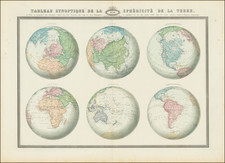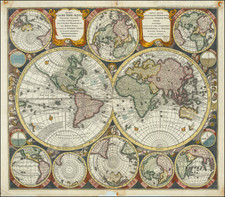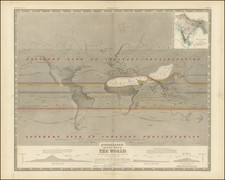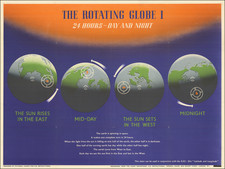This is a detailed early photographic facsimile of the two known world maps made by Diogo Ribero. This, his 1527 map, now resides in the Grand Ducal Library, Weimar, Germany. His other known map is called the Propoganda, or Second Borgian map. It was formerly in the Museo Borgia of the Propaganda Fide, now it is in the Vatican Library at Rome.
The map shows the results of early explorations into the interior of South America on both the Amazon and Rio de la Plata.
The early results of Verrazano's explorations of the East Coast of North America are also shown.
Ships are shown sailing on a vast undefined Pacific Ocean, communicating, in general terms, Magellan's circumnavigation.
The issue of calculating Africa's longitudinal width is clearly at play, as the Red Sea is depicted hundreds of miles east of where it should be.
The Edward Luther Stevenson Collection
Edward Luther Stevenson was among the most important scholars of early cartography active at the end of the 19th century and the first half of the 20th. He was responsible for numerous cartobibliographic books, including the first translation of Ptolemy to English, as well as a series of impressive facsimile maps produced while he was at the Hispanic Society of New York. Dr. Stevenson viewed facsimiles as integral to the study of early cartography, and he committed himself to building an unparalleled collection of photographs of early maps and globes. Much of his collection was donated to Yale University after his death (click on the title link above for about that), but the present item comes from a large collection of photos, manuscripts, and related material that were part of Stevenson's library, but were not donated to Yale. It is truly an impressive collection and many of the items, though reproductions, have serious antiquarian merit. As Alexander O. Vietor said about Stevenson collection that went to Yale "this is the stuff of which great libraries are made."













![(Second World War - Japan) 大觀世界大地圖 [Grand World Map.]](https://storage.googleapis.com/raremaps/img/small/79759.jpg)
![Stereographic Projection [and] Orthographic Projection on the Plane of the Equator](https://storage.googleapis.com/raremaps/img/small/64905.jpg)